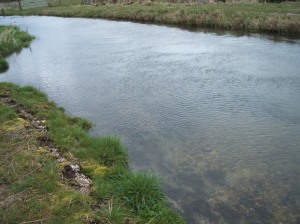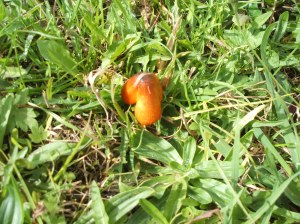We’ve looked at where chalk streams come from and their characteristics. Now it’s time to consider why English chalk streams are important.
The ecological significance of England’s chalk rivers is internationally recognised. England has the largest number of chalk rivers of any European country, with a cumulative length of nearly four thousand kilometres. The cultural and economic value of such rivers is also high; water abstraction, irrigation, fisheries management, energy provision and navigation are just some of the demands placed upon chalk rivers both historically and today. Consequently, the conservation of chalk rivers is a key concern for land managers, with ten chalk river Sites of Special Scientific Interest (SSSI’s) and four candidate Special Areas of Conservation (cSAC’s) across England.
Ecological diversity within chalk rivers is accommodated by habitat diversity, which in healthy waterways is facilitated by (relict) side channels, clean gravel-pebble substrates, wetland meadows, Ranunculus beds, shading, woody debris structures, gravel runs, glides, pools and riffles. Habitat diversity is especially important for those species that have different habitat optima during different stages of their life-cycle. For example, juvenile Atlantic salmon are thought to prefer shallow riffles because it maximises the effectiveness of their sit-and-wait feeding strategy. However, when migrating upstream to spawn, adult salmon will opt to travel through deep pools so as to avoid predation and exposure to sunlight; deep pool preference is also seen in adult trout. Consequently, ecosystems in which either habitat component is absent will be sub-optimal for Atlantic salmon.
It is not only salmon species that rely upon the variations in flow dynamics that occur within chalk streams to create their preferred life-stage habitat. A study of aquatic insect larvae from the Ardéche River in south-eastern France revealed that habitat suitability varied significantly between six different species. Suitability of a particular hydraulic habitat was also found to change through time, with species accommodating different environments during different growth stages.
The diversity of habitats available within chalk rivers and riparian areas is such that this life-cycle specific habitat selection can occur longitudinally (e.g. salmon species spawning upstream but residing in marine environments when adult), vertically (e.g. mayfly larvae inhabiting an aquatic habitat but living predominately in the air as adults), horizontally (e.g. lapwing chicks nesting in the riparian zone but foraging at surface waters when adult), and temporally (e.g. brown trout occupying surface turbulent habitats during the day but moving to pool habitats at night. Indeed many species will change habitat through more than one dimension during their lifetime.
I haven’t touched too much on the economic or cultural importance of chalk streams, which isn’t to say they’re not economically or culturually important; I just prefer the ecological stuff! A decent book to read to understand these ideas further is Mark Everard’s Water Meadows. It doesn’t deal with chalk streams explicitly, but it’s a great read to learn a bit about our landscape history.
In the next blog post in this series we’ll discuss the numerous threats to English chalk stream sustainability.


[…] in this blog series we’ve looked at what English chalk streams are, where they come from, and why they’re important. In this fourth installment (the first of a two-parter), we’ll be discussing three key […]
[…] chalk stream! However, these traits alone do not explain why these rivers are valuable. In the next post we’ll have a look at why chalk streams are important; ecologically, economically and […]
Reblogged this on The River Management Blog.